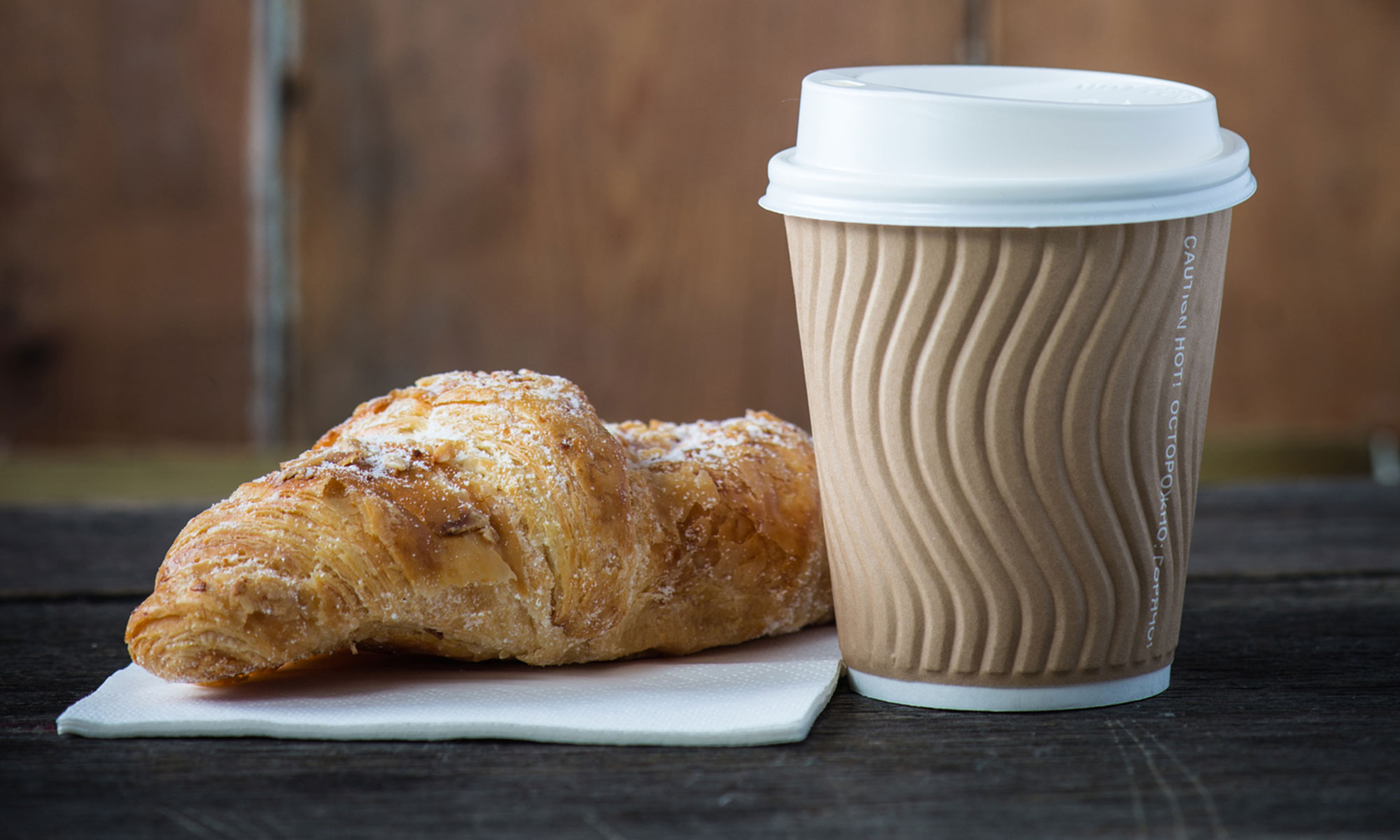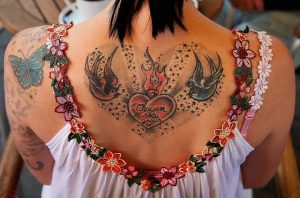About a thousand years ago, whilst casting about for the career that, forty years later I am yet to find, I worked as a milkman in north west London. Our yard had a full cast of characters amongst whom was a young lad called Keith. Goodness knows what the intervening years have brought to Keith, let’s hope they have been ones of fulfilment and happiness, but in 1978 there were two interest and two only in his life; Iron Maiden and tattoos. The former passion found it apotheosis in Keith’s Mark II Ford Cortina which, along with sheepskin seats, vinyl roof and metallic paint was kitted out with a set of speakers that entirely obscured the view from the rear window. On starting the engine the speakers would spring into life and the windows, the ground and buildings within several yards would vibrate to the shock sound waves Messrs Harris, Murray, Smith, Dickinson, McBrain and Gers.
Tattoos, on the other hand, caused Keith something of a problem. Then as now, it is against the law to receive a tattoo under the age of eighteen. Presumably this did and does not include tattooing oneself with a compass needle from your geometry set and a bottle of ink as many have – even the law cannot cover this level of stupidity. But such things were not for Keith, his plans were as grand as they were exotic but, being not yet quite eighteen, tantalisingly out of reach.
When the day eventually arrived, Keith eschewed all the temptations to which most people turning eighteen fall prey (going legally to the pub for the first time and drinking your body weight in legal alcohol) and made straight for the tattoo parlour. In the tea room the following morning, as we all gathered round, he peeled off what looked alarmingly like a sanitary towel, to reveal a magnificent dragon rampant with flaming sword, coloured with all the bright hues of a bruise. Awed though I may have been by the design, I was equally shocked by the amount of blood that formed about its curves and lines. Having no previous knowledge of how such things came to be, it was a considerable surprise that there was such apparent brutality in their creation.
It was either the following day or one soon after, that I found myself sitting opposite Keith. Quite out of the blue he leaned forward, grabbed my wrist and swiftly pushed the sleeve of my overalls up into my armpit.
‘Ere, Mar’in, you aint got no ta’oos.’
There was no denying it. Stretched out on the table for all to see was a rather slender forearm, white, covered only with the faintest wisp of hairs and completely bereft of ta’oos. Keith looked baffled until a sudden look of understanding spread across his face and grabbing my other sleeve he repeated the process. Still nothing.
‘Why you ain’t got no ta’oos?’
A little background required here; I was not quite brought up in the same way as my milkmen colleagues. I was distinctly middle-class and privately educated. I spoke with the proverbial plum in my mouth, I owned at least one pair of brogues, I occasionally wore a blazer, I’d been to Henley a couple of times, I’d been known to drink Sherry and. if I bought a newspaper, it was in a format that couldn’t comfortably read on a bus. To this point I had done a reasonable job of hiding all this. If I did speak (I generally tried not to) I affected a kind of geographically non-specific estuarine twang. With a tin of Old Holborn and two or three packets of Rizzlas I had taught myself how to construct a creditable roll up. I quickly developed a technique for lifting three crates of milk at a time onto my float and, if ever quizzed about where I was from, I simply replied “’Endon” (Hendon), keeping the exact, very middle-class location, a secret.
At that moment, as I sat at the tea room table with my white middle-class arms exposed I suddenly found myself having to openly confront an issue that, hitherto, I had successfully concealed. From the haughty, judgemental and frankly prejudicial perspective of an eighteen-year-old public school boy, I could not imagine anything more distasteful, ugly and down-right common as permanently scarring your body in this way. However, I swiftly judged that this may not be the right answer here. I hesitated, struggling to find any response that would have been suitable. Then things got worse.
‘You ain’t scared are you? Do you want me to come to the shop with you?’
Touched though I was by the offer, I was now confronted with a new challenge; on top of concealing my dis-taste, how to protect my machismo.
I’m not sure how it resolved itself in the end, I suspect I mumbled some banality and Keith judged me some kind of fairy. However this brief interlude illustrated broadly what having a tattoo in 1979 was all about; an expression of masculinity largely practised by working-class men.
I say broadly as the reasons for having a tattoo are almost as varied as the designs themselves. Tattooing reaches back through time to a point where the archaeological record of such things can no longer help us. Egyptian mummies were tattooed five thousand years ago and who knows, the practice may have begun many thousands of years before that, right back to one of those great moments in human history when someone said ‘I’ve got a good idea’, when that idea, such as punching your skin with an ink-charged needle to produce a permanent mark, seems counter-intuitive at best. The reasons for doing such a thing are manifold. Religious and spiritual symbolism, tribal identity, punishment of criminals, indicating status, medical and therapeutic reasons and of course beautification are among the more common throughout history.
So what is behind today’s tattooing epidemic? What is it that has driven the tattoo in Western culture out of dark, back-street shops near the docks, to high-street parlours where both the art and the artists have been elevated a high status and where having a tattoo – or more typically multiple tattoos – is no longer just an issue of male potency nor of class, gender or occupation? Have we created a generation of both men and women that have been simply beguiled into thinking that their indelibly marked bodies are a thing of beauty, only to discover that as time moves on, they are left stranded with the scars of fashion and culture, something which is, ipso facto, impermanent?
Perhaps the clue lies not so much in why but in what. Every tattooing culture has its own library of images, glyphs and symbols. Whether it be the intricate and beautiful abstractions of the Polynesian islands or the grim graphics of American prison gangs, there is a certain order to their art. They are essentially a message of togetherness and belonging.
Whereas there are certainly trends in modern tattoo artwork, there is a sense that what they are saying is not so much ‘I belong’ but ‘I do not belong’, the tattoo as a trope for a new attitude to self-expression. The body has become a canvas for how we see ourselves and how we wish others to see us.
The tattoos of my childhood, forty and fifty years ago were not ambiguous; there could be little confusion about the meaning of the letters L O V and E across the knuckles or the word ‘Mum’ on a banner wrapped around a blood read heart. But how are we to interpret the new symbolism which places mystery at its centre – cryptic dates in bold Roman numerals, Chinese symbols, mysterious grid references and astrological signs?
Isn’t the point that their very mystery is a call for interpretation. Do we not beg to be asked what this or that tattoo means and thereby to demonstrate just how sensitive we are? This the date my first child was born, this is where we first met, this is the Japanese symbol for peace and re-cycling. I am nothing more than a memo-board of my deepest feelings – a living embodiment of the flowers and wet teddies that I have left at the scene of the tragic death of someone I never knew nor met.
And these symbols, should you not know it, are forever. They cannot be erased any more than I would want them to be. I am, and always will be everything that they say. Caught in the whirl-wind of a disposable world, clothed by Primark, fed by MacDonalds and described in no more than 40 characters, my tattoos are all the timeless certainty that is denied me.
But is there something more sinister at work here? A ghastly cri de coeur about the self in age when the concept of self is increasingly meaningless; an alluring idea that leads to nothing but confusion and disappointment as we cast about for identity but are dragged down into a mono-cultural vortex?
Unlike Keith’s bleeding forearm, the thirst for ever more of the body to disappear under whorls and patterns of blue ink smacks of new kind of brutality; not one brought on by the tattoo artists needle but self-inflicted – a new scourging of the flesh, as we bear the scars of the pen as whip, in which the wounds remain forever unhealed and we wear the marks of our anguish not subcutaneously but on the very skin itself.
Martin Roberts
Latest posts by Martin Roberts (see all)
- Why using your hands might be good for you - October 13, 2017
- Have we done our best creative work by 30? - September 25, 2017
- The Madonna of Sant’Agostino - September 12, 2017

